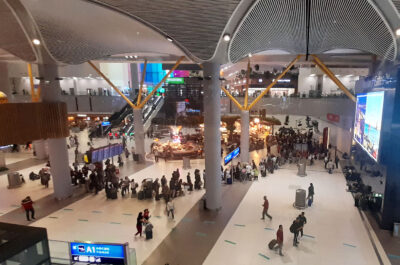Government spending on maintenance ensures technologies are upgraded with the latest capabilities, including screening for highly infectious diseases.
MOUNTAIN VIEW, CALIF. – Lingering threats of terrorism, numerous instances of passengers carrying illegal items, and the recent Ebola crisis have buoyed the U.S. airport screening technologies market. To ensure that airport screening systems are equipped with the most advanced and current capabilities, the government awarded 43.9 percent of contract obligations toward equipment maintenance in 2013. The maintenance tasks include upgrades, preventive maintenance, decommissioning and relocating systems, and operational testing and evaluation of systems.
New analysis from Frost & Sullivan, US Airport Screening Technologies, finds spending on airport screening technologies is expected to increase from $666.0 million in 2013 to 731.5 million in 2019.
The market will grow at a deliberate pace as airports will obtain advanced equipment only gradually. Furthermore, airports cannot procure next-generation screening technologies unless they comply with operational directives.
To speed up the installation or upgrade of existing equipment, the Transportation Security Administration (TSA) needs to leverage information that can be used to enhance the effectiveness of advanced imaging technology (AIT) with automatic target recognition capability. Without overall performance data, the TSA will not be able to gauge how well security officers resolve anomalies detected by AIT systems.
“The spending on explosives detection systems procurement and installation is expected to rise in 2015, as the TSA continues to implement the software upgrades needed to reduce security vulnerabilities and enhance detection capabilities,” said Frost & Sullivan Aerospace & Defense Senior Industry Analyst John Hernandez. “As it funds equipment maintenance through multi-year contracts, there will be steady revenue opportunities for original equipment manufacturers of airport screening technologies.”
Other less obvious revenue streams include the Science and Technology (S&T) directorate that invests in projects to develop technologies and advanced system concepts to detect a wider range of explosives and threat materials. The S&T will also seek to develop and invest in next-generation checked baggage screening systems that operate on much lower lifecycle costs and have significantly lower false alarm rates.
Meanwhile, the recent death of a patient who detected positive for Ebola, coupled with two additional Ebola cases in the U.S. will hasten the government’s efforts to procure technology capable of screening humans entering and exiting the country for highly infectious diseases.
“The government seeks futuristic airport screening technologies that are rapid and reduces human error,” noted Hernandez. “These screening technologies will have the ability to screen both personnel and luggage simultaneously, which translates to higher and rapid adoption of the systems. Additionally, the recent Ebola incidents will certainly force the U.S. government to re-examine detection technologies beyond explosives and hazardous materials.”
Theodore is the Co-Founder and Managing Editor of TravelDailyNews Media Network; his responsibilities include business development and planning for TravelDailyNews long-term opportunities.









































































































































































































